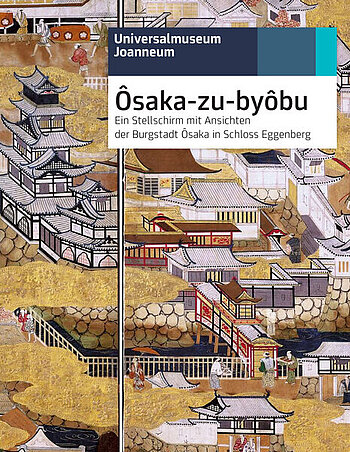Discover the
Universalmuseum Joanneum
Graz
Styria
Closed

More than 85 animal species from all continents live in the Herberstein Animal World.
Universalmuseum
Joanneum
Back to Universalmuseum Joanneum
Ôsaka zu byôbu. A folding screen featuring views of Osaka castle town in Schloss Eggenberg
Piece each 29,90 €
From time to time, Japanese works of art are re-discovered in Europe that one can describe as simply sensational. One of these is an eight-panel folding screen, which survived unrecognised for over 250 years as wall decoration in the Japanese Cabinet at Schloss Eggenberg. Its importance was only recognised in 2001 in the course of restoration work.
The Eggenberg screen is a tribute to the flourishing residence city of Toyotomi Hideyoshi (1536-1598), who restored the unity of the Japanese realm after a century of war and destruction. During his brief rule, the country flourished economically and culturally. Hideyoshi set up Osaka as his capital, and within a few decades the city had acquired a massive castle town and become a prosperous commercial centre. All this came to an end in 1615, when the Tokugawa overran the city and torched it. Most records of the city’s brief heyday were destroyed in the process, so that, apart from two other views, the Graz screen is the only surviving contemporary visual source. The Eggenberg folding screen has thus turned out to be a perfectly preserved and particularly detailed representation of the lost Toyotomi residence. It shows the flourishing court culture in the castle town during the Momoyama Period and the life of the warrior class with their religious customs, tea ceremonies, falcon hunts and boating trips.
Research into this precious cultural historical relic has been going on at the Universal Museum Joanneum , the Japanology Department of the University of Cologne, and Kansai University in Osaka since 2007, and a symposium in Graz in August 2008 provided an opportunity for the experts to present the results they have derived from the enigmatic information latent in the screen. The present volume makes these discoveries available to a German-speaking public for the first time.


















